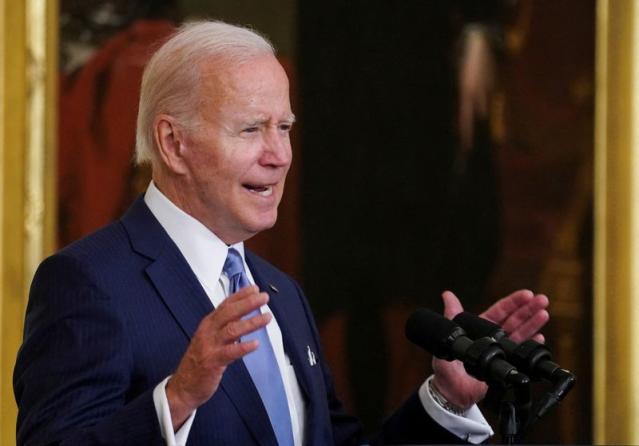The development of Vietnam’s semiconductor industry and American efforts to quickly establish the Southeast Asian country as a chips hub to protect against China-related supply threats are being seriously hampered by a chronic dearth of engineers.
When U.S. Vice President Joe Biden visits Hanoi starting on September 10 in an effort to formally strengthen ties between the two nations, semiconductors are anticipated to be a major topic of discussion. He will help Vietnam’s effort to increase semiconductor production, according to U.S. government officials.
One of Washington’s primary incentives to persuade Vietnam’s communist leaders to agree to formally enhance relations has been “friendshoring” sectors of the critical semiconductors industry. Hanoi was initially hesitant about the move due to concerns over China’s possible response.
The expansion of official connections might attract new private investment worth billions of dollars as well as some public funding for Vietnam’s semiconductor sector. The lack of skilled professionals, according to industry leaders, analysts, and investors, will be a significant barrier to the chip sector’s rapid development.
According to Vu Tu Thanh, director of the US-ASEAN Business Council’s Vietnam office, “the number of available hardware engineers is way below what is needed to support multi-billion-dollar investments,” or approximately one-tenth of anticipated demand over the next 10 years.
According to Thanh, who cited estimates from businesses and engineers, the country of 100 million people only has 5,000 to 6,000 skilled hardware engineers for the semiconductor sector, compared to an anticipated requirement of 20,000 in five years and 50,000 in ten years.
Another danger is a lack of qualified software developers for chips, according to Hung Nguyen, senior programme manager for supply chains at RMIT University Vietnam.
The labour, education, information, technology, and foreign affairs ministries of Vietnam did not respond to demands for comment.
The Vietnam government estimates that the country’s semiconductor exports to the United States are worth more than $500 million annually. The nation’s semiconductor industry is currently concentrated on the back-end manufacturing stage of the supply chain, which includes chip assembling, packaging, and testing, though it is slowly expanding into other areas like designing.
Although U.S. business executives have emphasised that the back-end is a significant growing sector, the White House has not specified which segments of the Vietnamese chips industry will be given priority.
China has been a significant factor in these decisions. According to Boston Consulting Group, China accounted for about 40% of all back-end production worldwide in 2019, compared to just 2% in the United States. Another 27% were in Taiwan, where China has increased military activities, stoking conflict worries.
That places the assembling sector, behind chipmaking, as one of the most concentrated in the business. Beijing has never held such a dominant position in another segment.
Even though Intel has had the largest chip assembly, packaging, and testing facility in the world operating in southern Vietnam for over 15 years, this is the case.
However, rival Amkor is constructing “a state-of-the-art mega factory for semiconductor assembly and testing” close to Hanoi in a sign of increased interest, according to U.S. Treasury Secretary Janet Yellen, who visited Hanoi last month.
More private investment might follow, particularly if Vietnam receives a sizable portion of the $500 million made available under the U.S. CHIPS Act for global semiconductor supply chains.
According to Hung of RMIT University Vietnam, the United States may also be interested in increasing Vietnam’s supply of raw materials for chips, particularly rare earths, for which the nation is said to have the second-largest resources in the world behind China.
The nation is gaining ground in the niche industry of chip design. There are activities there by the American chip design software giant Synopsys, rival Marvell has intentions to create a “world-class” facility, and local businesses are growing.
The makers of chip-making equipment are also showing interest in Vietnam, which has stated intentions to open its own semiconductor manufacturing facility, or fab, by the end of the decade.
JOB POSITIONS
However, if the skilled labour shortfall is not adequately addressed, Vietnam’s semiconductor goals may remain unrealized, leaving it more open to competition from countries in the region like Malaysia and India.
According to officials, Intel has frequently lobbied policymakers to increase the number of talented people available.
Earlier this year, sources claimed that it had explored nearly tripling its $1.5 billion Vietnam operation. However, it is unclear whether this is still the case since it made significant investments in Europe in June. A request for comment from Intel was not answered.
On its website for Vietnam, Amkor has roughly 60 job openings, primarily for engineers and managers. A request for comment received no response from it.
Until the indigenous trained workforce is sufficiently increased, a workaround may be to relax Vietnam’s regulations around the issuance of work permits for foreign engineers, which are currently “very hard to get quickly,” according to Thanh of the US-ASEAN Business Council.
But in order to do that, laws would need to be changed, and administrative processes would need to be expedited. This is no simple task, say numerous diplomats and businesspeople residing in Vietnam.
According to a statement from the White House, Biden plans to discuss workforce development programmes with Vietnamese leaders that could expand current training initiatives.

